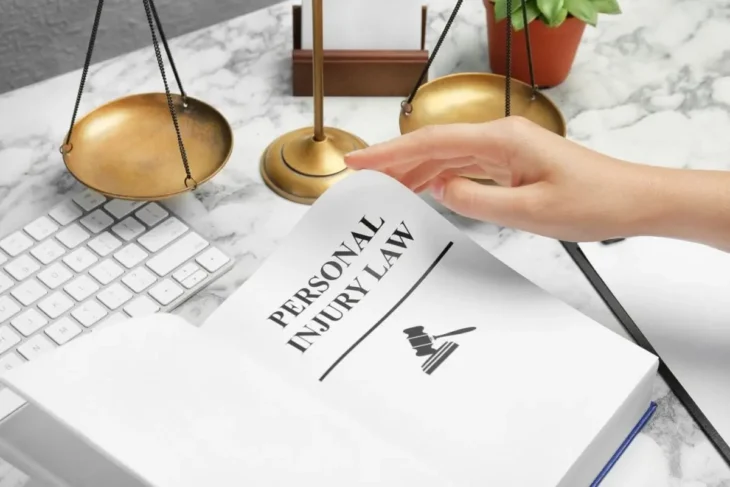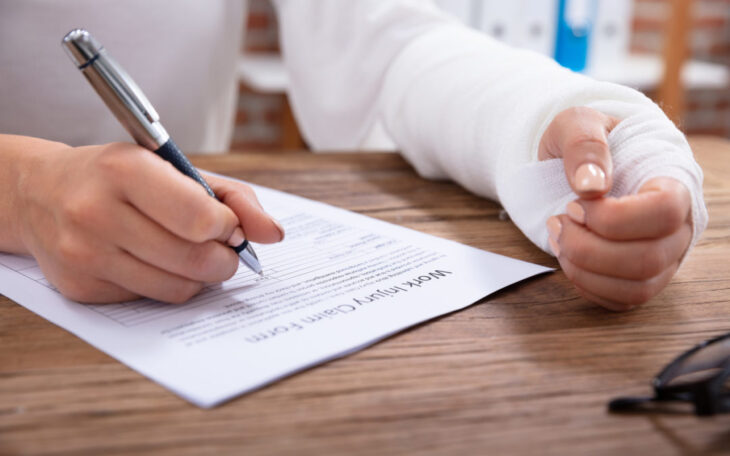At the point when someone else’s off-base activity (carelessness or intentional demonstration) causes hurt, personal injury law (otherwise called “tort” law) allows the casualty to look for compensation.
An assortment of conditions might bring about a genuine personal injury guarantee; however remember that an injury doesn’t consequently propose legitimate risk. We created this article about personal injury scenarios in collaboration with westcoasttriallawyers.com. Read on to check out probably the most well-known personal injury cases.

Source: lawyer-monthly.com
Common Kinds of Personal Injury Cases
Car Accident Cases. Personal injury claims are most usually recorded because of car accidents. At the point when a mishap occurs, it is generally the consequence of somebody neglecting to keep the guidelines of the street or not driving as warily as the individual in question ought to.
A careless driver can (typically) be considered monetarily and lawfully liable for wounds brought about by a vehicle impact. There are a couple of special cases in the dozen or somewhere in the vicinity of “no-issue” states, where drivers should gather from their protection except if they are “genuinely” injured.
Slip and Fall Cases. A slip and fall is one more typical kind of personal injury lawsuit. Land owners (or, in specific cases, people who lease property) are legitimately needed to keep their premises sensibly protected and liberated from perils so guests are not harmed.
Obviously, few out of every odd injury on the grounds will bring about risk. The legitimate liability of a landowner shifts relying upon the conditions and the enactment in power in the state where the injury happened.
Medical Malpractice. A clinical negligence lawsuit might emerge when a specialist or other medical services expert gives a therapy that falls beneath the necessary clinical norm of care and a patient endures accordingly. Note, nonetheless, that a helpless treatment result doesn’t naturally recommend bad behavior.

Source: molchanlaw.com
Defamation (Libel and Slander). Defamation, frequently known as libel or slander, is the damage done to an individual’s standing because of false explanations. Maligning offended parties should exhibit a few things relying upon what their identity is and where the assertion was made. The normal individual simply needs to show that a bogus slandering remark was articulated and that genuine mischief (monetary misfortune) occurred because of it.
Big names and eminent figures, then again, are typically expected to show “actual malice.” This infers they should exhibit that the bogus assertion was made deliberately or wildly dismissing its veracity.
Dog Bites. Much of the time, the canine’s proprietors are considered monetarily liable for the canine’s nibbles and different wounds. In any case, the exact standards administering proprietor obligation shift from one state to another. In such cases, rigid risk principles apply, and the canine proprietor will be found responsible for canine chomp harms regardless of whether the canine has never shown hostility or an inclination to nibble.
In specific districts, “one bite” rules apply, which consider proprietors liable for substantial mischief harms provided that they have motivation to think their canine is forceful or inclined to gnawing (like a past history of chomps.)

Source: westmorelandinjurylawyers.com
Tips for Getting the Best Personal Injury Settlement
Make a system for looking for personal injury compensation after any kind of mishap. At the point when the exchange cycle for your injury settlement for your situation warms up, you’ll need to have a solid arrangement set up. These settlement ideas are an extraordinary spot to begin.
Have a Specific Settlement Amount in Mind. When setting up your personal injury settlement request letter, you determined a scope of what you accept your case is worth. Prior to speaking with a protection agent about your case, settle on a base settlement figure inside that reach.
This total is for your records alone, and it ought not be imparted to the agent. Notwithstanding, having your primary concern as a top priority before the offers and counter-offers begin flying to and fro may help.
Do Not Jump at a First Offer. At the point when you accept your first proposition, your response ought to be reliant upon whether it is sensible however excessively low, or too low to be in any way a trial of your mastery. On the off chance that the deal is acknowledged, you might react with a counteroffer that is to some degree not exactly the total expressed in your interest letter. This shows the agent that you are additionally sensible and able to arrange.
You ought to have the option to accomplish a concession to a last settlement number with somewhat more bartering. Try not to rehash anything during these conversations. Just stress the most significant realities in support of yourself, for example, the way that the safeguarded was totally to fault.
Get the Adjuster to Justify a Low Offer. Regardless of whether the agent makes such a low proposal in your underlying talk that it’s conspicuous it’s an arranging procedure to check whether you realize how much your case is worth, don’t promptly bring down the number you set in your interest letter. All things considered, request that the agent present you with the particular explanations behind the low deal. Take notes on the thing you’re saying.

Source: bankruptcylawidahofalls.com
Then, at that point, in a concise letter, react to every one of the agent’s elements. Contingent upon the strength of the agent’s contentions, you can drop your interest somewhat, however you should hold back to check whether the agent would twist prior to going any lower.
Emphasize Emotional Points in Your Favor. During talks, raise any passionate elements that help your point. Consider a staggering photo of a destroyed vehicle or a serious looking injury that you shipped off the agent. Get back to the chance of liquor utilization if a jug of lager was situated in the other driver’s vehicle. Remind the agent if comparable events happened in a similar area.
Portray how your child was influenced if your wounds made it hard for you to care for that person. Despite the fact that these characteristics can’t be estimated, they can be very fruitful in persuading an insurance agency to settle a mishap guarantee.
Wait for a Response. Decrease your interest just again until the agent offers you another deal. Bringing down your interest twice without a mediating more prominent proposal from the agent is never a decent dealing procedure.
Look at every one of the agent’s extra explanations behind making a low deal. After you’ve tended to the agent’s focus as a whole, you’ll either get a satisfactory offer or find that no sensible deal is accessible, in which case you’ll have to come down on the insurance agency.
Put the Settlement in Writing. At the point when you and the agent have agreed on a figure, compose a letter to the agent to reaffirm your understanding. The letter can be brief and on point.

Source: ginjurylaw.com
Steps in a Personal Injury Lawsuit
Each personal injury case is one of a kind, however there are sure normal suit achievements to expect on the off chance that you choose to document a personal injury lawsuit. This is what occurs in an average personal injury case once it arrives at the civil court.
A Complaint is Filed and Served on the Defendant. In the wake of setting up that there is a suitable case, the offended party’s lawyer will document a personal injury lawsuit in the legitimate common court. The grumbling is the main authoritative archive in the lawsuit, and it subtleties the offended party’s allegations in significant detail (what the litigant did, how the offended party was hurt, and so forth)
The Defendant Hires an Attorney. The respondent will by and large have a month or more before their first court date to choose a lawyer. Tracking down a personal injury safeguard lawyer willing to take working on this issue ought to be simple if the litigant has cash or suitable protection inclusion.

Source: casecheck.co.uk
Pre-Trial and Discovery. During the pre-trial interaction known as “discovery,” the two sides would demand proof and witness data from one another. In the beginning phases of the case, the two players will show up in court to illuminate the adjudicator on how the case is created, to concur (or not consent) to intervention or mediation, and to set a preliminary date. As the disclosure interaction continues, the two players will start orchestrating sworn round table discussions with the other party and witnesses.
The Trial Phase of a Personal Injury Lawsuit. At last, the trial will start, which will in all probability last a few days in a common personal injury case. The appointed authority or jury will choose whether the litigant is to be faulted for the mishap and the offended party’s misfortunes, and assuming this is the case, how much compensation the respondent should pay.
Following the trial, any party might start a requests technique, which can endure anyplace from a couple of months to quite a long while. At the point when the requests framework is finished, a losing litigant will be needed to pay the damages chosen at preliminary or in advance.
Prior to coming to trial, by far most personal injury cases are settled. Indeed, even before the grumbling is recorded, the gatherings might settle and end the case anytime alongside the above-depicted strategy.
